ninja gaiden
Retiring my Nintendo DS Lite
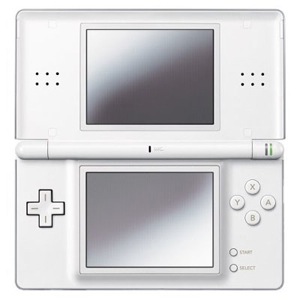 The Nintendo DS was the first game system that I followed from
announcement to launch. It was way back early 2004 that Nintendo first
hinted at a dual-screened handheld, then codenamed "Nitro." Considering
that was the only information available, it's not surprising that many
questioned Nintendo's strategy. Why two screens? Nintendo offered some
hypothetical benefits, like extra camera angles for sports games, but
their words were hardly convincing. Little did we know, it was
Nintendo's first step into the "blue ocean" strategy that would lead the
company to greener pastures.
The Nintendo DS was the first game system that I followed from
announcement to launch. It was way back early 2004 that Nintendo first
hinted at a dual-screened handheld, then codenamed "Nitro." Considering
that was the only information available, it's not surprising that many
questioned Nintendo's strategy. Why two screens? Nintendo offered some
hypothetical benefits, like extra camera angles for sports games, but
their words were hardly convincing. Little did we know, it was
Nintendo's first step into the "blue ocean" strategy that would lead the
company to greener pastures.
And yet, the original DS launch in November 2004 came and went with little fanfare. I was aware of the date, but didn't even realized that it arrived until I walked through a Wal-Mart electronics section and saw the grey handheld on the shelves. I kept walking. I was Nintendo faithful, sure, but it was hard to get excited about a launch lineup headlined by something nearly a decade old. It wasn't until the impending release of Kirby Canvas Curse in the summer of 2005 that I decided to bite the bullet, trading in half of my Gamecube library to GameStop in order to pay off the Nintendo DS and one game.
While it's certainly worth praise in its own right, I think Canvas Curse deserves to be remembered as the flagship of the DS library; it was the first of a fleet of incredible games that would follow in its wake. A system redesign, dubbed the DS Lite, accompanied the platform's newfound software vigor. Reduced size, brighter screens, and an iPod aesthetic provided enough worth for many to upgrade (including me) and many more to buy in for the first time. The sleeker profile and beefier games are what truly began the success story of the best-selling handheld game system ever.
But even Nintendo's first detour in the generations-old graphical arms race would lead to a dead end eventually. With the launch of a successor, the 3DS, history tells us that the best we can hope for is a year or two of life support for what was once Nintendo's "third pillar." It was an incredible performance that none could have predicted, and I think the Nintendo DS deserves a hearty round of applause before its curtain call. I've decided to contribute to the celebration in that age-old tradition of blogging: the top ten list.
In no particular order, here are ten great games that exemplified some aspect of the Nintendo DS' legacy.
The QTE cure: Singin' in the Heavy Rain
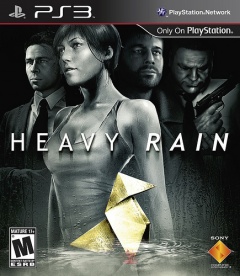 Quick Time Events. Ever since God of War and Resident Evil 4 exploded
onto the scene with button-prompt sequences of gore and horror, the
industry has shown its sheep-like nature and incorporated these Gotcha!
moments into games without thinking about how they make an
interactive experience better. Many gamers have adjusted to the fact
that every cutscene now has an awful series of play buttons throughout, but I
personally would like to cram all the QTEs in the world into a space
shuttle full of cobras and launch them directly into the sun if it meant
I'd never have to see another one again.
Quick Time Events. Ever since God of War and Resident Evil 4 exploded
onto the scene with button-prompt sequences of gore and horror, the
industry has shown its sheep-like nature and incorporated these Gotcha!
moments into games without thinking about how they make an
interactive experience better. Many gamers have adjusted to the fact
that every cutscene now has an awful series of play buttons throughout, but I
personally would like to cram all the QTEs in the world into a space
shuttle full of cobras and launch them directly into the sun if it meant
I'd never have to see another one again.
That said, it's not impossible to come across decent use of QTEs.
Indeed, before Resident Evil 4 set the standard at the advent of 2005,
the mechanic was most prominently-used by the Dreamcast's crown jewel,
Shenmue. In fact, it was Yu Suzuki, that game's director, who coined the
term "Quick Time Event." Suzuki put the gimmick to good use throughout
Shenmue, allowing protagonist Ryo Hazuki to do everything from tossing
drunkards around in bar brawls to saving little girls from incoming
soccer balls. One of the reasons the game is so beloved today is that it
allowed the player to engage in such a wide variety of scenarios, many
of which were supported with smartly-designed QTEs.
Good QTEs didn't end with Shenmue, however, even though sometimes it seems that's the case. Like God of War, other Playstation heavyweights have managed to use QTEs to enhance a game experience. I think it's only fair that we look at a few of those, as well as some alternatives to these timed button-prompts for cinematic flair in games.
Ninja Gaiden Dragon Sword
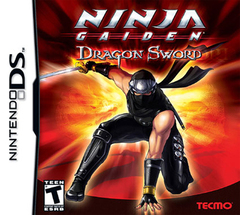 Ninja Gaiden Dragon Sword is a new action game for the Nintendo DS. It features 3D graphics with pre-rendered backgrounds and the story is set six months after the events in Ninja Gaiden for the Xbox. I recently posted my first hour review of Ninja Gaiden and Ninja Gaiden and was inspired to try out the newest offering in the series. This was an excellent decision because Dragon Sword was a great game and plays perfectly on the Nintendo DS. Read on for the full review, but note, Ninja Gaiden Dragon Sword is not to be confused with Ninja Gaiden II: The Dark Sword of Chaos for the NES or Ninja Gaiden II for the Xbox 360.
Ninja Gaiden Dragon Sword is a new action game for the Nintendo DS. It features 3D graphics with pre-rendered backgrounds and the story is set six months after the events in Ninja Gaiden for the Xbox. I recently posted my first hour review of Ninja Gaiden and Ninja Gaiden and was inspired to try out the newest offering in the series. This was an excellent decision because Dragon Sword was a great game and plays perfectly on the Nintendo DS. Read on for the full review, but note, Ninja Gaiden Dragon Sword is not to be confused with Ninja Gaiden II: The Dark Sword of Chaos for the NES or Ninja Gaiden II for the Xbox 360.
Ninja Gaiden and Ninja Gaiden
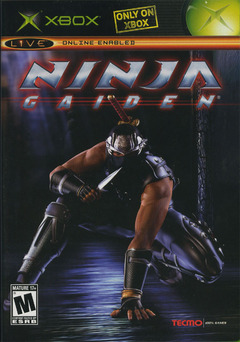
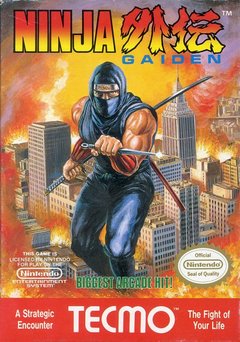 Ninja Gaiden and Ninja Gaiden are NES and Xbox games with the exact same name. Ninja Gaiden for the NES came out in 1989 and Ninja Gaiden for the Xbox came out in 2004. I'm not sure why Tecmo and lead designer Itagaki didn't give the Xbox Ninja Gaiden game a subtitle, but it's too late to wonder, because there are officially two games under the name of Ninja Gaiden, just released 15 years apart. In first hour tradition, I will be only playing Ninja Gaiden for one hour, but because they are named exactly the same, I will first play half an hour of Ninja Gaiden for the NES, and then half an hour on the Xbox. This will complicate the review a bit, but I'll try to always make is clear what game I'm talking about.
Ninja Gaiden and Ninja Gaiden are NES and Xbox games with the exact same name. Ninja Gaiden for the NES came out in 1989 and Ninja Gaiden for the Xbox came out in 2004. I'm not sure why Tecmo and lead designer Itagaki didn't give the Xbox Ninja Gaiden game a subtitle, but it's too late to wonder, because there are officially two games under the name of Ninja Gaiden, just released 15 years apart. In first hour tradition, I will be only playing Ninja Gaiden for one hour, but because they are named exactly the same, I will first play half an hour of Ninja Gaiden for the NES, and then half an hour on the Xbox. This will complicate the review a bit, but I'll try to always make is clear what game I'm talking about.
This is an exciting time for the Ninja Gaiden series, as Ninja Gaiden: Dragon Sword was released last month for the DS and Ninja Gaiden II will be out in a few weeks for the Xbox 360. Remember, this is a new Ninja Gaiden II, not Ninja Gaiden II: The Dark Sword of Chaos which was released on the NES in 1990. Yeah, Tecmo does it again. I plan on playing Dragon Sword (not Dark Sword) someday as it sounds pretty cool, but this review is all about the first hour of the two Ninja Gaidens. So let's get right down to it. To start, the first thirty minutes of Ninja Gaiden for the NES.
